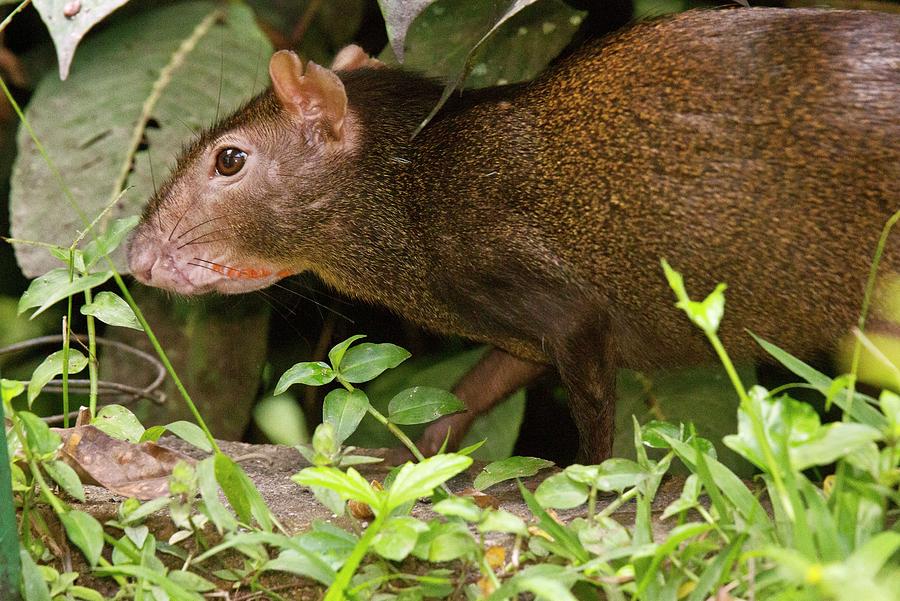

We followed the fate of seeds 3–14 mm in diameter through three processes after seed deposition: secondary dispersal, predation, and seedling emergence. We expected that seeds dispersed by howlers would have a different fate from those dispersed by capuchins and guans, since their scattered defecations are less attractive to dung beetles. Howlers produce clumped defecations that attract dung beetles, which provide secondary dispersal by burying seeds embedded in feces. We compared the fate of seeds dispersed by howlers to dispersal by two other frugivores present in the park: capuchin monkeys (Sapajus nigritus) and guans (Penelope superciliaris). Howler monkeys (Alouatta guariba) have been reintroduced in Tijuca National Park, a defaunated Atlantic Forest fragment.

However, their effects on ecological processes have seldom been assessed. Species reintroductions have been proposed as a strategy for reversing local disperser extinctions. The loss of larger frugivores alters seed dispersal. The buried seeds are from zoochoric large-seeded trees, thus enhancing recruitment in a disperser-impoverished forest. Agoutis were seen eating fruits and seeds of 10 species and burying seeds of three of them.

Among the main recommendations for future reintroductions, we suggest the reduction of quarantine and the maintenance of acclimatization periods, with structural improvements for both. The reintroduction was considered successful in the short-term. The estimated annual survival rate was 0.83, and 10 nature-born cubs were observed. Individuals abandoned the food supplement up to 87 days after release, establishing home-ranges at least three times larger than in natural populations of agoutis. Six males and three females died, but the others gained weight during acclimatization (range=150-260 g n=5). One male died and almost all individuals lost weight (range=0-620 g n=11) during quarantine (median=133 days range=67-243 days n=20). We captured and tagged 21 adult individuals from a semi-captive population and reintroduced four males and seven females. Here we report on the reintroduction of agoutis, Dasyprocta leporina, to a Brazilian Atlantic Forest reserve in order to (1) determine the short-term status of the reintroduction (2) describe and evaluate the management procedures that contributed to reintroduction success and (3) identify the fruits and seeds consumed and buried by the agoutis, as an indication of their role in restoring ecological processes. Evaluating the success of reintroduction projects allows conservationists to learn from previous experience. The acuri palm seeds may be particularly important for agoutis using fragmented forests, given that the large-seeded palms are able to persist even in small fragments, which is untrue for other important resource.Reintroduction is an increasingly important tool to restore local extinctions and ecological interactions. These findings show that this large-seeded palm can be an important resource for the agoutis' populations during the fruit-scarcity period. The acuri palm availability also drove the agoutis' probability of site abandonment from the rainy to the dry season, with higher abandonment probability in sites with low acuri palm availability. In the rainy season, occupancy by agoutis was not correlated with acuri palm availability, while in the dry season, it was positively correlated with the palm's availability. The agoutis occupied a high proportion of the forested areas in the rainy season (0.83), but the occupancy decreased in the dry season (0.39). We investigated the influence of acuri palm (Attalea phalerata) on the occupancy of agouti Dasyprocta azare during both the dry and rainy seasons, as well as the abandonment probabilities in the transition between seasons in the Brazilian Pantanal. Resource availability can influence animal movement causing changes in home-range size and arrangement between seasons.


 0 kommentar(er)
0 kommentar(er)
